The Story of the Seven Dwarfs Mining Inc:
How the Coronavirus Masked the Corporate Debt Bubble

by Tim Langeman 2233 words (17 min read)
Introduction
Before the coronavirus, a false narrative arose that the economy was healthy, as measured by:
- growth in the stock market and a
- reduction in the unemployment rate
when in fact the recovery from the 2008 financial crisis was weak and the facade of strength was masked by low-interest rates which enabled governments, corporations, and individuals to achieve the illusion of prosperity through increased borrowing.1
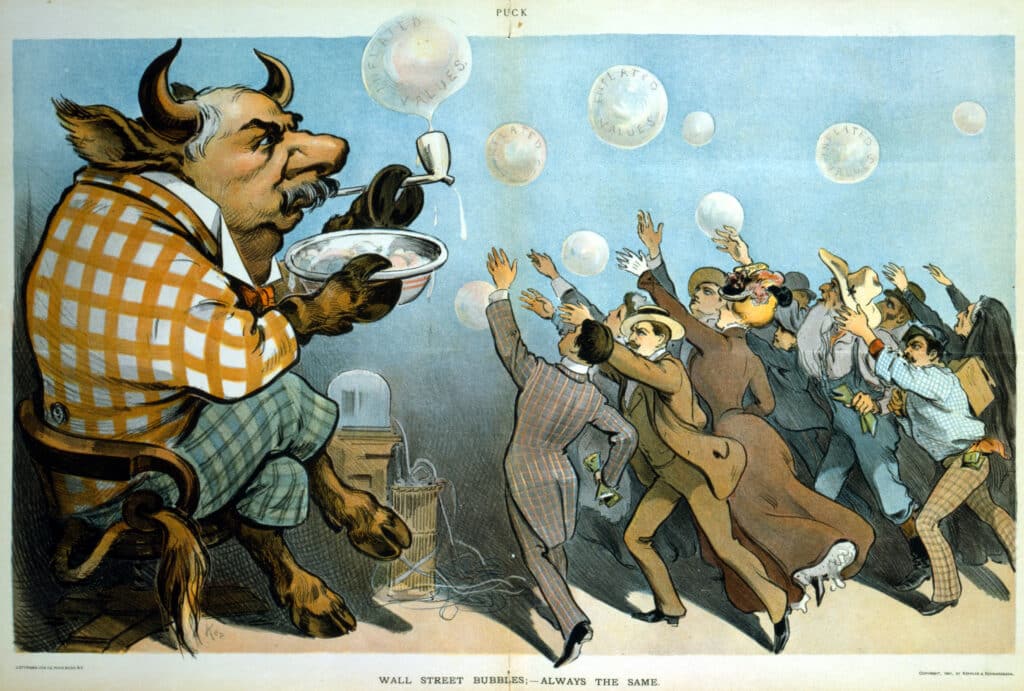
But there is more to the economy than the stock market and unemployment rate. The bond market is larger and “smarter” than the stock market. When assessing the pre-coronavirus economy, one must also take into account the stagnant profits2 corporations disguised by borrowing in the bond market to fund purchases of their own stock, artificially inflating the stock market.
Like an Injured Athlete taking Pain Killers
The US economy was like a professional football player who had been “playing hurt” for many years.

Keith Allison Sports Photos (CC BY-SA 2.0)
The economy used debt like the football player uses pain killers. The debt masked the economy’s problems3 and allow it to perform at a higher level than otherwise would have been possible had pain-killers not dampened the brain’s ability to perceive reality. But unfortunately, an economy is not like an athlete in that it can’t retire at the end of a 15-year career.
Featuring: The Seven Dwarfs
The story I’m about to tell is intended to illustrate how corporations borrowed money and then used that money to buy their own stock, inflating the stock price.4 In finance jargon, this is called “leveraged stock buybacks”.5 Corporations have used stock buybacks as a major strategy to boost their share price but many corporations didn’t have enough profits to buy back their stock because the overall level of (pre-tax) corporate profits has been flat since 2012.6. While some companies may have been able to legitimately afford to buy their own stock with real profits, over 50% of those buybacks were done using borrowed money.
In fact, if you look at who had been the buyer of most of the stock purchases in 2018 and 2019, it had mostly been the companies themselves purchasing their own stock, not pension funds, individuals, or hedge funds.
I illustrate how this market manipulation works using a fairy tale featuring the seven dwarfs and their mining company “7 Dwarfs Mining, Inc.” Early in the story, the dwarfs seemed to have discovered an easy way of making money until an unforeseen emergency struck and disrupted their carefully laid plans.
It is commonly known that emergencies reveal.
This story illustrates what emergencies can conceal.
The Founding Members:

Once upon a time, the 7 Dwarfs Mining company was founded in a small Forest Kingdom town by Seven dwarfs:7
- Dopey,
- Doc,
- Bashful,
- Happy,
- Grumpy,
- Sleepy, and
- Sneezy
After a number of years in business together, the mining company was valued at $7 million8 and generated $700,000 in profit per year, which they split 7 ways.9
| Assets | # of Shares | Yearly Profit | Profit per Share | Debt |
|---|---|---|---|---|
| $7 million | 7 | $700,000 | $100,000 | $0 |
Going Into Debt to Hide Flat Growth
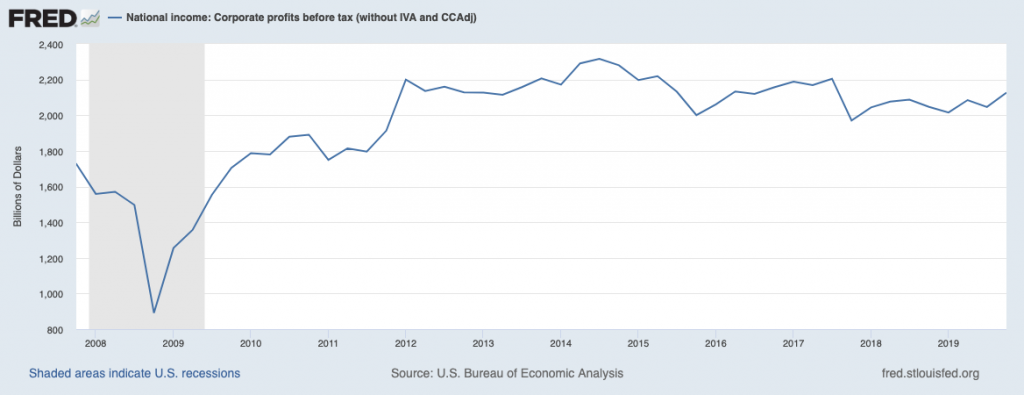
One year, Grumpy decided he was unhappy in the mining business. Perhaps this was due to his sour attitude, or perhaps he was feeling blue because the mine’s profits had not increased at all in the previous 6 years.10 Grumpy decided to sell his share in the mining company, but there were not a lot of other dwarfs that wanted to buy out his stake at the price of $1 million.
The other 6 dwarfs in the company wanted to continue in the business but they didn’t have the cash to buy out Grumpy, so they decided to borrow the $1 million from the bond market. Interest rates were low in the Forest Kingdom because the economy hadn’t fully recovered from the previous debt-fueled financial crisis a dozen years prior.11 The kingdom’s treasury secretary’s belief that low-interest rates stimulate growth was also a factor in setting the interest-rate climate.12 This easy lending environment allowed the dwarfs to succeed in borrowing $1 million at an interest rate of 3% per year.
The Dwarfs’ Epiphany: Earnings per Share
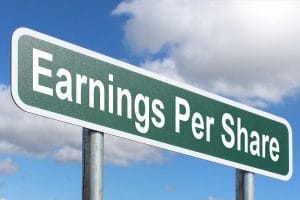
CC BY-SA 3.0 Alpha Stock Images
After Grumpy exited the company, the 6 remaining dwarfs renamed their business: “6 Dwarfs Mining, Inc“. The total value of the company (market cap)13 was still $7 million and they split the same $700,000 profit six ways instead of seven. This resulted in profits of $116,666/share, a 16.7% increase over the prior year. Grumpy sulked for the next year and a half about missing out on the share price increase his exit had created, but Dopey reminded him that it was his own idea to leave. 🙁
| Exit | Market Cap | Leverage Ratio | Yearly Profit | Profit per Share | % Profit Increase per Share |
Equity | Debt |
|---|---|---|---|---|---|---|---|
| Original 7 Dwarfs | $7 m | 7/7 | $700,000 | $100,000 | – | $7 m | $0 |
| Post-Grumpy Exit | $7 m | 7/6 | $700,000 | $116,667 14 | 16.7% | $6 m | $1 m |
Upon learning of this increase in EPS (Earnings Per Share), the 6 remaining dwarfs were elated! By taking on debt to buy out Grumpy’s stake, they managed to reduce their number of shares, thereby achieving their first share price increase in 6 years! Things were looking up! **
** “Earnings per Share” were up even though the Dwarf’s equity in the company was down.15
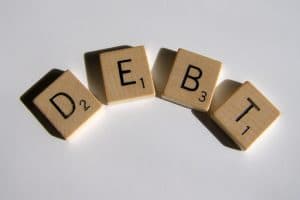
Setting Dopey’s Debt Plan in Motion
Bashful was known to wear his heart on his sleeve, especially if he had romantic feelings for someone.16 So the next year, after Bashful’s most recent crush departed the village, Dopey encouraged a lovestruck Bashful to retire from the company and follow his sweetheart to the neighboring Mountain Kingdom to the North. Dopey wanted to reduce that number of shareholders in the mining company because he had learned the benefits of having fewer shareholders from Grumpy’s exit, even if that comes at the expense of having more debt. He calculated that splitting $7 million five ways would result in a share price of $1.4 million per share. This would be a 40% increase over the original $1 million share price, although the company’s profit was still the same $700,000 per year. Once again, the dwarfs went to the bond market and used borrowed money — an additional $1 million dollars — to buy out one of their fellow dwarf’s share.
| Exit | Market Cap | Leverage Ratio | Yearly Profit | Profit per Share | % Profit Increase per Share |
Equity | Debt |
|---|---|---|---|---|---|---|---|
| Original 7 Dwarfs | $7 m | 7/7 | $700,000 | $100,000 | – | $7 m | $0 |
| Post-Grumpy Exit | $7 m | 7/6 | $700,000 | $116,667 | 16.7% | $6 m | $1 m |
| Post-Bashful Exit | $7 m | 7/5 | $700,000 | $140,000 17 | 40% | $5 m | $2 m |
After the successful payoff, Dopey said to Doc: “Wow, this debt thing is really an easy win. A few years ago we were struggling with plans to make efficiency improvements to the mines but that would have required us to invest some of our profits into new machinery, research and development, and employee training. Instead, I only needed to identify the key to Bashful’s heart and use some accounting wizardry18 to increase our share price the “easy way” — with more debt.”
Following the Plan
Dopey had a reputation for harebrained plans, but he knew that Sleepy’s drowsiness was no reason to doubt his intelligence or acumen.19 Dopey concluded that the two things that would most motivate Sleepy to sell his share were the attraction of sleeping in until noon and a bonus of $100,000, so he struck up a conversation with Sleepy on these two themes when the two had a private moment together. The next year, Sleepy was enjoying a restful retirement in the tropics and the mining company had one fewer shareholder.

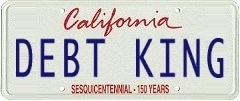
The pattern continued again the following year with Happy given a $150,000 bonus contingent on his retirement, causing the share price to rise to $2,333,333 (a 133% increase). All the remaining dwarfs were extremely happy at this turn of events, as was Happy himself. 🙂 Dopey took out a loan to buy a red Ferrari with the vanity license plate “Debt King” in anticipation of his upcoming buyout. Yet, at the same time, the company’s total profit remained the same $700,000 per year it had been originally before Grumpy exited.20
| Exit | Market Cap | Leverage Ratio | Yearly Profit | Profit per Share | % Profit Increase per Share |
Equity | Debt |
|---|---|---|---|---|---|---|---|
| Original 7 Dwarfs | $7 m | 7/7 | $700,000 | $100,000 | – | $7 | $0 m |
| Post-Grump Exit | $7 m | 7/6 | $700,000 | $116,667 | 16.7% | $6 m | $1 m |
| Post-Bashful Exit | $7 m | 7/5 | $700,000 | $140,000 | 40% | $5 m | $2 m |
| Post-Sleepy Exit | $7 m | 7/4 | $700,000 | $175,000 | 75% | $4 m | $3 m |
| Post-Happy Exit | $7 m | 7/3 | $700,000 | $233,333 21 | 133% | $3 m | $4 m |
(Note: These figures are simplified. They do not include reinvesting profits or interest charges on the debt.)
A Declining Credit Rating
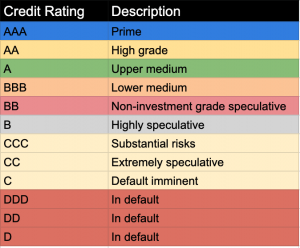
One of the unnoticed consequences of Dopey’s plan was that the mining company’s credit rating began to deteriorate as the company borrowed money in the bond market. The company was effectively agreeing to devote some of its future revenue (i.e. paying interest on the additional debt in the future) in exchange for a higher earnings per share today. Before Grumpy exited, the company had a AAA credit rating, but as Bashful, Sleepy, and Happy’s shares were bought out, the company’s credit rating fell to AA, then A and now stood at BBB, the lowest investment grade.22
Dopey was warned that if the company was assessed another credit downgrade the company would fall to a non-investment grade status (often referred to as “junk” bond status23). Were that to happen, pension funds and many investors would no longer be legally permitted to own the company’s debt and the interest rate the dwarfs would have to pay would spike higher. Dopey calculated that there was a higher risk to the company’s finances in the coming years, but he figured that would be Doc and Sneezy’s problem, not his, because he, Dopey, planned to be the next dwarf to exit. After Dopey left the company his financial interests would be separate from the mining company and he would not longer care if the company should happen to suffer losses.
The Unforeseen

The number of shares now stood at 3, with Dopey, Doc, and Sneezy remaining, when something unforeseen happened — a sickness called Rapidico took hold in the neighboring kingdom of Achin. As the illness reached the cities of the Dwarfs’ Forest Kingdom the advisors to the kingdom’s Queen — Queen Elizabeth II’s24 privy council25 — recommended that the kingdom go into lockdown to prevent the spread of the disease.
The Response
A lockdown seemed like a radical idea and one that the queen deferred to individual provinces.26 As other provinces of the kingdom went into lockdown, Dopey, Sneezy, and Doc were dismissive and continued business as usual at 3 Dwarfs Mining, Inc.

A month and a half later, an outbreak of Rapidico took place at 3 Dwarfs Mining, Inc., set off by an asymptomatic Sneezy. Dopey later recalled, “Sneezy is always sneezing; I didn’t think nothing of it.” But the tight quarters of the mine proved to be fertile ground for the contagion to spread and many mine workers were infected. True to his name, Doc threw himself into the job of treating the afflicted dwarfs and heroically saved countless lives, but the mine’s production ground to a halt nonetheless. Other businesses were similarly affected and the queen was forced to move beyond her earlier deference to provincial autonomy and call for a strict quarantine.27
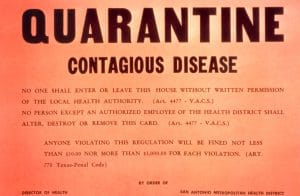
The Divided Kingdom
Because the Forest Kingdom was so fractious and the forest creatures so impatient, financially vulnerable, and headstrong, not all parts of the kingdom followed the queen’s orders closely. This disunity among the provinces resulted in stubborn pockets of disease in the lagging parts of the kingdom which hampered the economic recovery.28
The length of the quarantine caused heavy losses to the 3 Dwarfs Mining, Inc., requiring them to borrow more money. Of the original $7 million that the company had started with, the 3 Dwarfs Mining Inc had only $3,638,841 equity left ($9,846,549 assets – 6,207,708 debt)29 because they had borrowed in the bond market to buy out the shares of Grumpy, Bashful, Sleepy, and Happy, resulting in a debt of $6,207,708.30
The Risk and Reward of a High Leverage Ratio
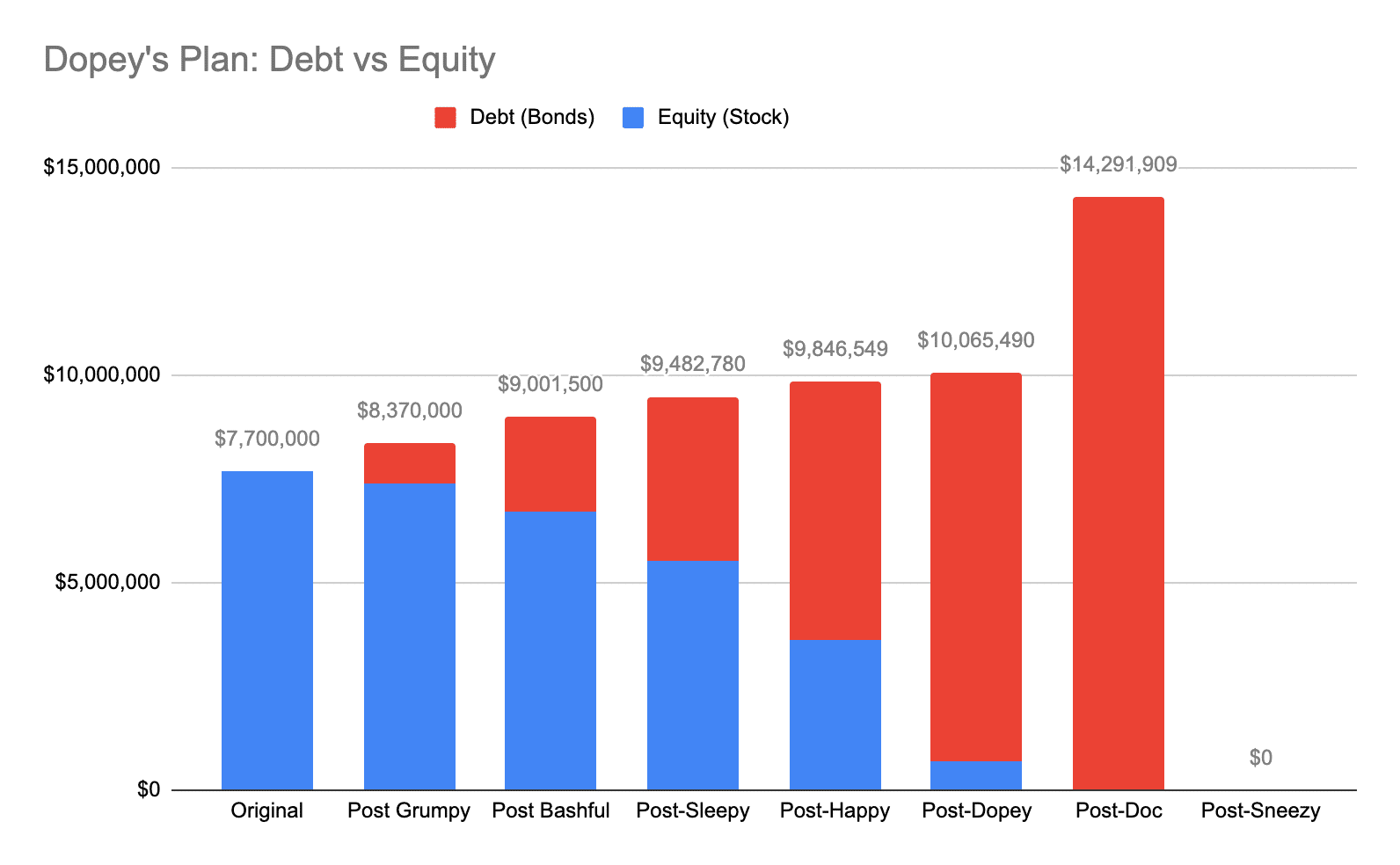
Companies can choose how much risk they want to take to accelerate growth (Risk vs Reward). The use of debt is a key contributor to the speed at which a company can grow but it also increases the risk that the company will falter should an unforeseen risk arise.
In this particular case, the leverage ratio31 I’m comparing is the ratio of market cap32 to debt. Notice how the Leverage ratio increases as the number of shares (or equity) decrease. Reducing the equity, in this case, increases the leverage ratio (7/2 = 3.5), which increases the profit per share.
Notice how the profit per share increases as the leverage ratio increases.
| Exit | Market Cap | Leverage Ratio | Leverage | Profit per Share |
|---|---|---|---|---|
| Original 7 Dwarfs | $7 million | 7/7 | 1.0 | $100,000 |
| Post-Grump Exit | $7 million | 7/6 | 1.17 | $116,667 |
| Post-Bashful Exit | $7 million | 7/5 | 1.4 | $140,000 |
| Post-Sleepy Exit | $7 million | 7/4 | 1.75 | $175,000 |
| Post-Happy Exit | $7 million | 7/3 | 2.33 | $233,333 |
| Planned Dopey Exit | $7 million | 7/2 | 3.533 | $350,000 |
Note: This chart has been simplified34
When Dopey planned to exit, the share price would have risen from $1 million to $3.5 million on the leverage ratio alone. A more complex calculation that reinvests profits each year would have the original $1 million share price to rise to $4,923,274, not including a bonus of $200,000, which would leave Dopey with a total exit package of $5.1 million dollars!35
When things are going well, leverage has the effect of multiplying a company’s earnings per share by the leverage ratio. But when an unforeseen tragedy hits, it leaves companies with less of a cushion to ride out a storm.
The “Debt Bomb” Goes Undiscovered
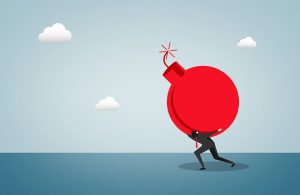
There had been a concern before the Rapidico virus hit, that a large number of Forest Kingdom companies had also been following Dopey-like plans to increase their share price the easy way — through financialization — that is “financial engineering” that inflates share price but does nothing to improve labor productivity. In the 7 Dwarfs Mining Company, the profit doesn’t grow at all, but EPS (earnings per share) still goes up anyway because the number of shares goes down. The shareholders retain ownership in the company, but often with higher levels of debt.
Resetting the “Debt Bomb”
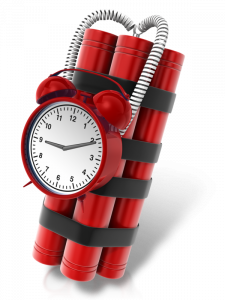
The result is a potential “debt bomb”36 37 where a buildup of debt can threaten the whole economy. The companies contributing to this “debt bomb” report share price growth, but this “growth” is artificial because total profits are flat and earnings per share growth are only made possible by taking on more debt. When the debt bomb explodes (or pops like a bubble) it threatens to spill over into the broader economy, threatening the whole country, not just the borrowers. 38
The Rapidico crisis had given the government the opportunity to blame some of the kingdom’s problems, which had been years in the making, on the Rapidico virus and the country of Achin, even though a significant part of the financial problems were the fault of the kingdom’s systemic dysfunction. Had the kingdom not already experienced a financial crisis a dozen years prior, and had there not been such low interest-rates, the Dwarfs would not have taken on so much debt, leaving their mining company financially vulnerable in a time of crisis. Had the Rapidico crisis not happened, such debt dysfunction was bound to lead to another recession anyway and leave the kingdom to grapple with questions about the authenticity of the prior decade’s growth.
Debt for Productive Purposes?

When some of the queen’s more intellectually self-critical advisors speculated that it would have been better had the Forest Kingdom’s companies invested the money they borrowed into productive assets rather than share buybacks, others replied that too few workers could afford to buy39 what the companies would have produced.4041
Sweeping it Under the Rug?
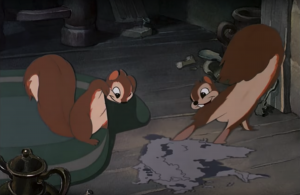
from “Whistle While You Work”
Disney’s Snow White and the 7 Dwarfs, 1937
A lone advisor commented that the prior 6-8 years of flat profits42 during supposed “good times” boded poorly for future growth prospects. “When was the last time we’ve generated substantial growth without a lot of debt and the creation of another artificial bubble?”43, said the deputy finance minister. Many advisors agreed with her, but were hesitant to break the bad news to the public. Nevertheless, all agreed that the queen’s legacy depended upon her taking steps to prevent such a debt bomb from re-emerging and requiring yet another bailout. You might be able to afford this bailout, but we haven’t done anything to pay down the debt from the previous financial crisis and we certainly can’t afford to make bailouts the norm. Next time, her advisors said, you won’t have the Rapidico virus to blame for the bailout and you won’t be able to sweep all that debt under the rug.
Will the Dopey Financial Plans Stay Concealed?

“I know great nations face their problems, rather than distract the public with diversions,” said the queen,44 but a financial crisis is no time to address deep weaknesses within the economy. Calling attention to the country’s debt dysfunction will only erode consumer confidence when we need it most. Besides, many of the Debt-Dopies are particularly crafty and hire former members of parliament as their lobbyists! Another bailout is inevitable. It is better for me to let the “Debt Dopies” 45 remain concealed by the wider bailout, for now, encourage optimism about the economy’s revival, and let someone else deal with the problem later.”
To repeat my opening statement:
It is commonly known that emergencies reveal.
This story illustrates what emergencies can conceal.
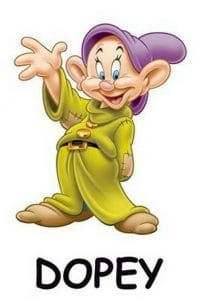
by Tim Langeman
Perhaps you have ideas on how this story could be improved. I welcome your suggestions.
I also welcome suggestions about who you think would be interested reading about and collaborating on this issue.
Tags:
Note:
This is a very simplified example of financialization involving only debt and share buybacks at large corporations. More complicated cases can involve some profit growth, executive compensation, and cost-cutting. This story is not about small businesses. It has been simplified to a case of only 7 shareholders for illustrative purposes.
Questions:
- Had you heard how much many USA large corporations’ credit ratings declined in the years before the coronavirus crisis started in early 2020 and that much of their debt was rated just above “junk” status at that time?46 47 NPR’s Planet Money has an accessible and entertaining story on why Credit ratings declined. It was this 9-minute podcast story that inspired me to do the research for this piece.
- Did you know that most of the stock purchases made before the crisis were NOT made by pensions, individuals, foreign investors, or hedge funds, but by the companies themselves?
- Did you know that over half of companies’ stock buybacks were funded with debt?
- Why do you think many large corporations chose to borrow money to buy back their stock rather than invest it for productive purposes between 2012 and 2020? Here are some possibilities to start with:
- Too much regulation to make investment profitable?
- Are taxes too high?
- Too much political uncertainty?
- Do customers already have what they need?
- Customers too maxed out to afford to buy more?
- The company has a mature market position- there is little room to grow. Better to draw down on the company’s credit rating (“mortgage the company”) and redirect the money to other companies with better opportunities?
- Executives don’t want to take a risk on long-term innovation and growth when low-interest rates make significant short-term debt-driven share price increase a low-risk choice?
- Perverse incentives reward executives for hitting bonus targets in any way they choose, even if their choices are contrary to the long-term interests of the company?
- How would you feel if it turns out that, contrary to conventional wisdom, corporate profits (before taxes) had been flat from roughly 2012 – 2020 and stock prices were inflated with debt?4849
- What other political or economic things are being revealed or concealed by the coronavirus?
Background Reading:
- Financialization is profit margin growth without labor productivity growth. (by Ben Hunt)
- Texas Instruments: a poster child for financialization, the Obama/Trump Zeitgeist: an unparalleled transfer of wealth to the managerial class (by Ben Hunt)
- 9 Questions about the Finance System: Was the Pre-Coronavirus Stock Market a Bubble Inflated by “Financial Engineering”? (2014-2020) (by Tim Langeman)
See Linked Spreadsheet for Details of Dopey’s Financial Plan.
(Improve my numbers: download Excel version, tweak and Email me.)
Videos
Social Capital CEO Chamath Palihapitiya’s case against stock buybacks, dividends
More that is Concealed:
Federal Reserve enters new territory with support for risky debt
Programme to support ‘junk’ bonds aims to soften blows from coronavirus and downgrades
.. The Federal Reserve has jolted credit markets by expanding the scope of its support measures, announcing plans to buy debt issued by riskier companies in a radical addition to its crisis-fighting toolkit.
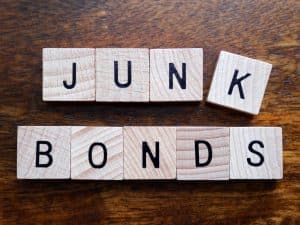
.. Under the programme, the central bank will buy corporate bonds that were rated triple B minus or above — the threshold for a company’s debt to be considered investment-grade — on March 22. That still includes bonds from recently downgraded companies such as Ford, known as “fallen angels” when they lose their coveted investment-grade ratings.
Read More: Financial Times (British)
Obscure Section of CARES Act Provides $195 billion for Wealthy
.. the $2.2 trillion CARES Act passed by Congress last month contains deep within its 800 pages two barely-noticeable tax clauses that only benefit rich Americans, perhaps including the president.
The new tax clauses will cost Americans about $195 billion over 10 years50

photo by Scott Smith
.. The astronomical cost only became evident a day after CARES was signed into law, when the nonpartisan congressional Joint Committee on Taxation (JCT) published an analysis of the provisions. The committee’s latest findings show that four of five millionaires will pocket an average of $1.6 million more this year alone thanks to the stimulus bill. This of course dwarfs the $1,200 one-time checks average Americans will receive.
In total the tax clauses will cost taxpayers more than the funding allotted in the CARES Act to all hospitals throughout the US, and more than the relief provided to all state and local governments, according to the JCT analysis. Together, they are the costliest elements of the relief package.
Read More: Quartz
Echoes of 2008: They Mistook leverage for genius
Steve Eisman (of Michael Lewis’s book and Movie “The Big Short“)
Steve Eisman: Quantitative Easing was a failure: it didn’t get corporations to borrow and invest. Rather, they borrowed and bought up their own stock. They didn’t really invest in the economy.
In other words, they increased their profits by increasing their debt (leverage) ratio.
(the interview is from 2017)
Steve Eisman: Inequality was a cause of the 2008 Financial Crisis (10:17)
People “levered themselves” (ie took out loans that increased their debt-equity ratio)
Steve Eisman: They made money because they increased their leverage (debt ratio) and they mistook their leverage for genius (12:19)

This work is licensed under a Creative Commons Attribution 4.0 International License.
(Most images created by others)
Footnotes
Finance-types refer to borrowing as “leverage” because, like a ‘lever’, it amplifies your effort.↩
You might wonder why this Federal Reserve chart looks different than upward sloping graphs you are used to. The first reason is that this graph uses pre-tax figures that do not include the boost that corporate tax cuts gave to the stock market. The other reason is that this graph is based on total profits, rather than earnings per share. In the rest of this article, you will learn how corporate debt artificially inflated earnings per share.↩
The fallout from the prior 2008 financial crisis was not dealt with. The government bailed out the system and assumed the debt. Most Americans’ wages had stagnated and healthcare and education expenses have gone up dramatically. In order to compensate for week customer demand, companies had begun to borrow money and buy back their own stock. Even with a deficit of $1 trillion/year, pre-coronavirus, the economy grew at a rate of 2.1% and was projected to fall to 1.6% by 2024.↩
Now with the coronavirus crisis, the federal reserve is buying some of that debt, as well as allowing corporations to issue additional debt at artificial prices.↩
“Leveraged” is just a fancy term used to indicate that financial activity is amplified by borrowing.↩
Pre-tax Corporate profits peaked in 2014 and have been roughly flat since 2012. The perception of growth is mostly due to the additional debt (share buybacks) and the 2017 tax cuts (federal government debt).↩
There are many variations of the Seven Dwarfs’ Names. I’m going with the 1937 Snow White and the Seven Dwarfs animated musical fantasy film produced by Walt Disney Productions↩
The value of all the stock is equal to the value of all the company’s assets minus its liabilities.
( total stock shares = number of shares x share price) ↩
I picked round numbers for this. If you want to help me improve the numbers, see the excel doc in the footer and edit it.↩
In Place of the Finances of the 7 Dwarfs Mining, Inc., I’ve inserted a Graph above referring to US Corporate Profits before Taxes, as reported by the St. Louis Federal Reserve. Read more about the chart and about “Financial Engineering” that turns this flat graph into a growing one. ↩
While the level of consumer debt was reduced, corporate and government debt went up.↩
How different would rates have been if the government had not pushed for a late-cycle stimulus and not resisted advice to raise interest rates?↩
Market Capitalization is the total value of all outstanding shares. Shareholders own what remains after everyone else has been paid (this includes employees, bondholders, vendors, etc)↩
7/6 = 1.67↩
“Equity” is what the shareholders own after all the bills (including debt) have been paid. It is the value of assets minus liabilities. The additional debt they took on to buy out Grumpy’s share is a liability.↩
Disney Fandom: “Aside from his coyness, Bashful also appears to be romantic. He adores the idea of true love, and when Snow White decides to share a story with the dwarfs, Bashful joyfully suggests a love story, which she obliges to.”↩
7/5 = 1.40↩
Investopedia.com: financial engineering is the use of mathematical techniques to solve financial problems. .. Although financial engineering has revolutionized the financial markets, it played a role in the 2008 financial crisis. As the number of defaults on subprime mortgage payments increased, more credit events were triggered. Credit Default Swap (CDS) issuers, that is banks, could not make the payments on these swaps since the defaults were happening almost at the same time. ↩
Disney Fandom: “However, in spite of spending most of his time nearly falling asleep, Sleepy is apparently the most observant and logical of the seven dwarfs, whether he knows it or not. He was the only dwarf to make the assumption that the Evil Queen may be attacking Snow White at the cottage when the forest animals frantically interrupted the dwarfs’ mine work.”↩
This is a simplified version of the finances that doesn’t include interest or profit reinvestment. I was concerned that adding them at this point would take away from the broader point.↩
7/3 = 2.33↩
Prior to the coronavirus, roughly half of all corporate debt was rated BBB, which is the minimum “investment grade” rating. A lot of this debt was purchased by the Fed as part of the bailout, including debt that was downgraded to “junk” status.↩
“Junk” bonds are often referred to as “high yield” bonds. “High yield” sounds nicer and it accurately conveys that these bonds have a higher yield (or interest rate) as compensation for the extra risk the lender takes.↩
I am deliberately using the British System as a way to distance the reader from drawing favorable or unfavorable inferences onto current American officials. This story is really about the dwarfs (and especially large corporate businesses) and the way they relied on debt to raise their share price.↩
The Privy Council of the Forest Kingdom is a formal body of advisers to the Sovereign. Its membership mainly comprises senior politicians who are current or former members of either the House of Commons or the House of Lords. ↩
Provinces are like states in the American context. The head of a province is the Premier.↩
Yes, I know in the British system the Queen would leave this governance to the prime minister but I figure an audience of Americans don’t understand the British system and this version is simpler to explain while taking the spotlight off of particular American politicians.↩
In some parts of the kingdom the quarantine was applied multiple times to respond to re-occurrences.↩
“Equity” denotes how much their company is worth — how much remains for the shareholders after everyone else is paid.↩
One might think the debt would be (4 x $1 million)= $4 million. But the actual cost of buying out each share increased as the share price increase: $1 million + $1.28 million + $1.67 million + $2.35 million + bonuses. ↩
For simplicity, I’m using a leverage ratio that uses market cap/debt. A more common ratio is debt/equity.↩
value of all shares, which is the share price multiplied by the number of shares↩
Leverage = 7/2 = 3.5↩
- I’m assuming a constant total profit of $7 million to simplify this example
- I’m not including reinvesting profits or deducting interest paid on the debt
See spreadsheet at the bottom of this page↩
A debt bomb is a situation where a default on a large accumulation of debt can produce major negative consequences not only for the borrower but for many other market participants. That is to say, other people’s debts can harm you even if you were not over-indebted yourself.↩
.There is more than one type of debt bomb. Banks can become debt bombs. Countries can become debt bombs due to public debt. This is a simplified example of a small business as a metaphor for an entire country.↩
Low-interest rates make it easier to have more debt and to create “debt bombs”.↩
40% of Americans can not afford a $400 emergency. Why should companies invest in increased capacity when consumers’ wages have been stagnant for decades and therefore can’t afford to purchase more products and services? ↩
One can argue that share buybacks are a good way for established companies with limited opportunities to redirect money to shareholders, but does this also apply when companies don’t have the cash but decide to take on extra debt for this purpose?↩
I’ve heard that leveraged stock buybacks can be thought of as “refinancing,” but refinancing only changes the interest rate of existing debt. These seem more like talking on additional debt for the purpose of converting equity to debt. The average homeowner can think of this as taking out a second or third mortgage on a house. You’re taking on more debt. If the debt doesn’t have a productive purpose it is likely to be problematic. ↩
Yes, profits per share increased because the number of shares decreased, but total profits were flat.↩
The satirical website “The Onion” provided prescient commentary in 2008 when they published an article titled “Recession-Plagued Nation Demands New Bubble To Invest In”↩
My goal is to focus on the debt and the circumstances why it was incurred, rather than to focus on Trump (in the American context) or any particular politician, which is why I cast Queen Elizabeth II in the role of queen.↩
In the Disney series, Dopey does not talk, which does make it a problem if you want to portray him as a “Financial Schemer”↩
When I talk about large corporations, I’m not talking about small businesses of less than 1,000 employees. The 7 Dwarfs were used as an illustration to make the situation easier to understand, but I don’t mean to include small businesses in this analysis at all.↩
Roughly half of all corporate debt is rated BBB, which is the minimum “investment grade” rating. A lot of this debt was purchased by the Fed as part of the bailout, including debt that was downgraded to “junk” status.↩
It is possible that profits are not flat, that they have actually gone up but the unreported profits were siphoned off to tax havens.↩
Another factor that contributed to corporate share price growth was tax cuts which were “paid for” with additional growth in the national debt.↩
I don’t know how much money David Geffen will personally get from this bill. I use his yacht as a symbol of the wealth that isolates rich people from the typical citizen and curries favor with the politicians that write, vote for, and sign the bailout packages.↩